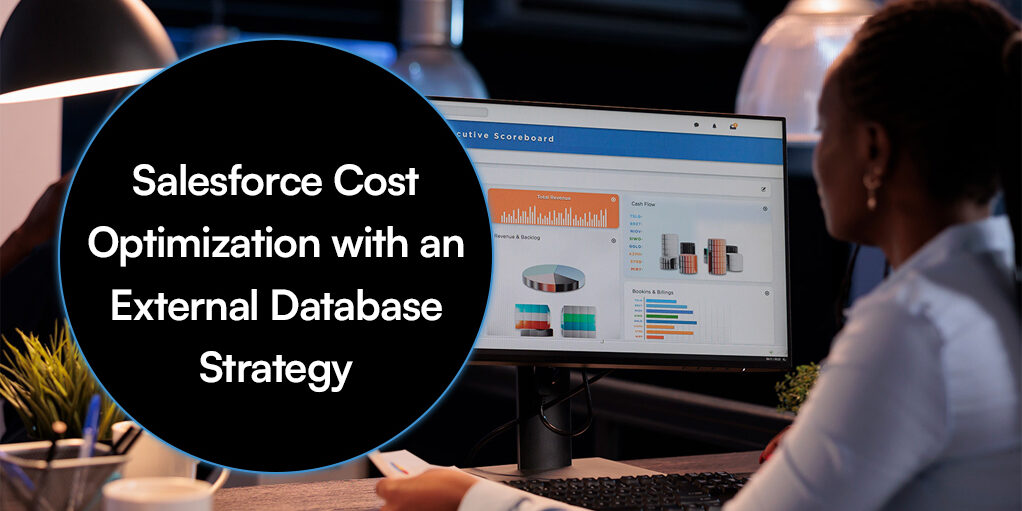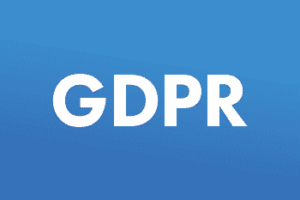Salesforce costs don’t end at licensing fees, and maintaining a quality Salesforce implementation can be a significant operating cost. Storage alone can cost north of $125/month for every 500MB of storage, and enterprise applications easily exceed 60GB of required storage.
Additionally, the large volumes of data slow down the performance of the Salesforce app itself, causing inefficiency in core business workflows that cost valuable time and money. This is especially true for older businesses with a lot of historical data to store. Not only does this data slow down functionality, but the Salesforce governor puts limits on the amount of resources tasks can take up at any one time, effectively barring users from certain functionality if data isn’t stored efficiently.
So, what can businesses do to solve these issues? In over a decade of Salesforce implementation experience, we have figured out the best Salesforce cost optimization strategy that also alleviates the effect of data overload on your Salesforce app’s performance. In this guide, we will cover:
- Our external database strategy for Salesforce cost optimization
- Benefits of external databases
- Cutting-edge external database implementation examples
- How to start your own cost optimization process
Let’s dive into each and demonstrate the value that external cloud databases can provide Salesforce users.
External Databases for Salesforce Cost Optimization
We recommend saving money on Salesforce data storage by leveraging a secondary cloud database for non-critical and historic data. This reduces the amount of data stored on Salesforce itself, reducing costs and increasing operational efficiency within the Salesforce app.
Cloud-native storage solutions like AWS, Azure, and Snowflake offer a large volume of affordable secondary storage. Salesforce’s access to this data can be maintained with tools like Salesforce Connect or through embedded dashboards offered by third-party or custom software developers.
Key Benefits of Secondary Cloud Databases
We’ve discussed the issues that this cloud database integration is meant to solve, but it can still be helpful to directly address the benefits that come from these modern data storage solutions. In our experience working with Salesforce implementation clients that decided to leverage secondary storage in this way, we see the following benefits:
| Cost Savings | Cloud storage generally carries a monthly cost of around $0.02-0.25/GB, vs Salesforce data storage rates of $125/500MB and file storage rates of $5/GB |
|---|---|
| Improved Performance | With less data stored on-platform, Salesforce runs faster, and its governor restricts fewer/none of the features your users need |
| Scalability | Unlimited growth potential on cloud storage vs limited storage in Salesforce |
| Advanced Analytics | Using separate cloud storage allows you to use AI, ML, and BI tools directly on data stored externally |
| Seamless Visibility | Embedded dashboards give clear overviews of stored data without cluttering the Salesforce interface |
These outcomes provide tremendous value by directly reducing the financial strain of data storage while also speeding up daily operations done through your CRM platform. The additional benefits beyond this stem from the fact that Salesforce fundamentally wasn’t designed to operate as a bulk storage platform. Like most core business processes, bulk storage of data is best done through platforms specifically designed– and priced– for this purpose.
So, secondary data storage in a cloud database isn’t just a Salesforce cost optimization move; it is a top-down data optimization strategy. It improves nearly every outcome related to the maintenance and handling of non-critical and historical data, and even allows you to perform critical data operations within Salesforce faster.
External Data Storage Implementation Highlights
To paint a better picture of how cloud storage will provide the above benefits, we are going to highlight some specific features of an external data implementation and outline how exactly they improve data-driven workflows within Salesforce.
Hybrid Architecture with On-Demand Sync/Scheduled Archiving
Hybrid architecture refers to a connected software architecture using external cloud storage databases connected to Salesforce, as we’ve outlined so far in this piece. On-demand sync and scheduled archiving refer to two ways that a business can initiate data transfers from the Salesforce to the external cloud database when it is no longer needed for day-to-day operations.
- On-Demand Sync: This is a data transfer method that allows users to initiate a data transfer (via an embedded app or button) as needed, like the moment after they have used the data for its intended purpose. This is great for use cases with defined endpoints for data within a workflow.
- Scheduled Archiving: Scheduled archiving refers to queuing data transfers from Salesforce to the external database on a set schedule to ensure consistency and predictability. This works best for use cases where data needs aren’t as predictable, or in high-volume applications where inconsistent data transfer scheduling can cause significant cost variance month-to-month.
By utilizing a hybrid architecture with one or both of these transfer methods, businesses make it easy and fast to move data to a cheaper database with a lower impact on performance.
Security and Regulation Compliance
Another essential feature in any data-focused software implementation is a strict security protocol and compliance with regulations relevant to your industry. Different cloud databases will have different levels of built-in security and compliance, but heavily regulated industries like healthcare and banking should consider an implementation partner with custom software development and HIPAA/SOC2 experience, since they can guarantee that your implementation’s security and compliance infrastructure is adequately built out.
Ideally, most of this will be automated to ensure minimal impact on your existing workflows, and custom software developers can leverage modern AI and ML tools to accomplish that.
Dashboard and Reporting Integrations
This feature is more optional than others, but it can drastically improve the user experience for your staff. Integrating custom dashboards and automated report generation systems gives at-a-glance visibility into the data stored in your external database. This helps counter the only potential con of external storage, which is an obstacle between your staff and the data that has been moved off of Salesforce.
Custom dashboards are great for use cases where most of the historical and non-critical data falls into a few key categories, requiring very little distillation and organization to become readable. Simple financial or historical inventory data are great examples of this.
Automated report generation can be more helpful for complex data use cases like healthcare, banking, and other industries that handle both high volumes and a massively diverse set of document types.
These businesses often rely on reports to organize and interpret data, which takes time and effort from staff in order to make it readable and actionable for leadership. With AI and ML-powered report generation tools, this can all be automated to make sure that moving data outside of Salesforce doesn’t reduce visibility. In fact, moving data to an external database can actually make it easier to apply these tools to it.
How to Begin Your Salesforce Cost Optimization Project
The first step in optimizing Salesforce costs with external cloud storage is to identify your needs. Ideally, this will be done with an experienced Salesforce implementation partner who knows exactly what to ask and the actionable steps to take to meet every single one of your needs.
During this needs assessment, it is essential to discuss:
- Your current storage footprint
- Which data makes sense to offload to an external database
- Any integration goals and/or compliance needs
Then, you have the choice of either allocating/hiring staff to handle it in-house or letting a reputable partner take care of it for you.
The 7T Advantage: Salesforce Cost Optimization and Implementation
Choosing 7T as your Salesforce cost optimization partner means working with a trusted leader in CRM/ERP implementations and custom software solutions. Our proven methodologies, deep expertise, and commitment to client success set us apart, making us the ideal partner for your digital transformation journey.
Ready to elevate your business processes? Contact us today to schedule a consultation and discover how 7T can empower your growth!









